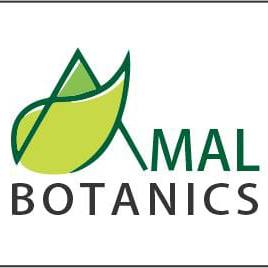
Types of Moringa and Their Benefits
Share
Types and Species of Moringa and Their Benefits
Moringa, often referred to as the “Miracle Tree,” is renowned for its versatility, nutritional value, and health benefits. While Moringa oleifera is the most well-known species, there are several other types of Moringa plants, each with its unique characteristics and benefits. This article explores the main species of Moringa and highlights their specific advantages for health, agriculture, and the environment.
1. Moringa Oleifera
The most commonly cultivated and studied species, Moringa oleifera, is native to India but widely grown in tropical and subtropical regions worldwide.
Key Benefits
- Nutritional Powerhouse: Rich in vitamins A, C, E, and minerals like calcium and potassium.
-
Health Benefits:
- Reduces inflammation.
- Boosts immunity with its high antioxidant content.
- Supports heart health by lowering cholesterol and blood pressure.
-
Culinary Uses:
- Leaves: Used fresh or dried as powder for teas, smoothies, and cooking.
- Pods (drumsticks): Eaten in curries or soups.
2. Moringa Stenopetala
Native to Ethiopia and Kenya, Moringa stenopetala is often referred to as the “African Moringa.” It is a staple crop in these regions, especially in arid climates.
Key Benefits
- Drought Resistance: Thrives in dry, low-rainfall areas, making it a valuable food source in regions facing food insecurity.
- Medicinal Properties: Traditionally used to treat malaria, diabetes, and high blood pressure.
- Water Purification: Seeds can be used to clarify and purify drinking water.
3. Moringa Peregrina
Key Benefits
This species grows in arid regions of the Middle East, North Africa, and parts of India. Moringa peregrina is highly valued for its oil-rich seeds.
-
Oil Production:
- Seeds yield high-quality oil, known as “ben oil,” used in cosmetics and cooking.
- The oil is light, non-greasy, and has a long shelf life.
- Environmental Benefits: Provides shade and prevents soil erosion in desert areas.
- Nutritional Value: Leaves and pods are nutrient-dense and consumed locally.
5. Moringa Drouhardii
Found exclusively in Madagascar , Moringa drouhardii is a less common species but holds unique ecological importance.
Key Benefits
- Environmental Impact: Provides food and fodder in the arid regions of Madagascar.
- Conservation Importance: Helps maintain biodiversity in the region.
- Cultural Significance: Used in local traditions and rituals.
4. Moringa Concanensis
Native to India and Sri Lanka, this species grows in semi-arid regions and is often confused with Moringa oleifera.
Key Benefits
- Traditional Uses: Often used in Ayurvedic medicine for treating respiratory and digestive issues.
- Wild Species: Acts as a genetic reservoir for improving cultivated Moringa varieties.
Comparison Table: Key Features of Moringa Species
|
Native Region |
Primary Benefits |
Unique Uses |
|
|
Moringa oleifera |
India, Global |
Nutritional value, health benefits, culinary |
Widely cultivated for food and medicine |
|
Moringa stenopetala |
Ethiopia, Kenya |
Drought resistance, medicinal properties |
Water purification |
|
Moringa peregrina |
Middle East, Africa |
Oil production, environmental benefits |
High-quality ben oil |
|
Moringa concanensis |
India, Sri Lanka |
Traditional medicine, genetic reservoir |
Wild species |
|
Moringa drouhardii |
Madagascar |
Conservation, ecological significance |
Local traditions |
Why Understanding Moringa Types Matters
Knowing the differences between Moringa species can help you choose the one that best suits your needs:
- For Nutrition: Moringa oleifera is the go-to option.
- For Agriculture or Harsh Climates: Moringa stenopetala and Moringa peregrina excel.
- For Oil Production: Moringa peregrina is highly efficient.
- For Conservation Efforts: Moringa drouhardii plays a key role.
Explore Moringa Products at AMAL Botanics
At AMAL Botanics, we offer a variety of organic Moringa products designed to meet your health and wellness goals. Whether you’re looking for Moringa powder, tea, or oil, we have you covered.
Conclusion
Moringa’s diversity across its species underscores its incredible adaptability and usefulness. From the nutrient-rich Moringa oleifera to the oil-yielding Moringa peregrina, each species contributes uniquely to human health, agriculture, and the environment.
Discover the wonders of Moringa today and unlock its potential for a healthier, more sustainable lifestyle!
